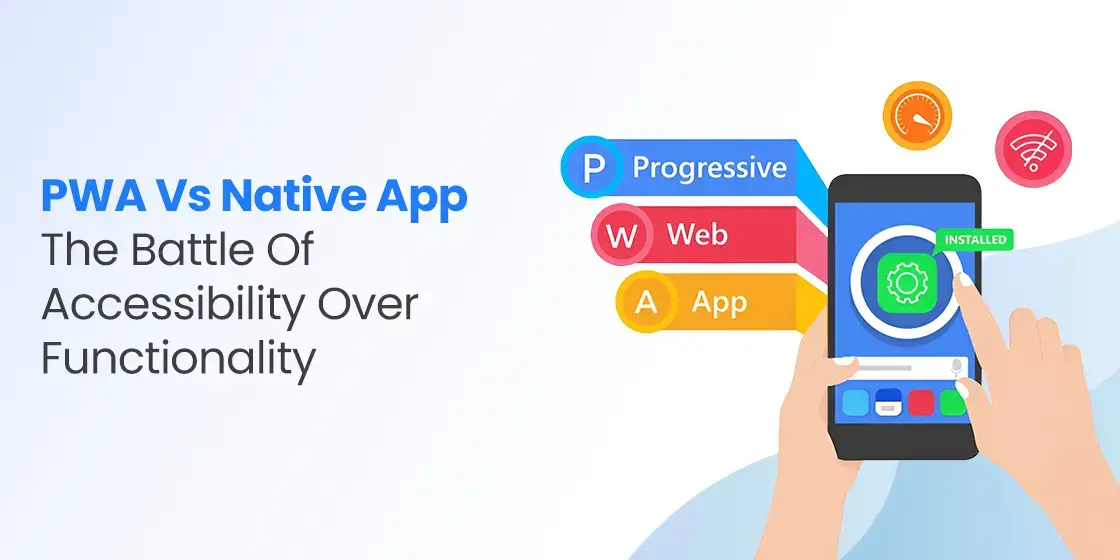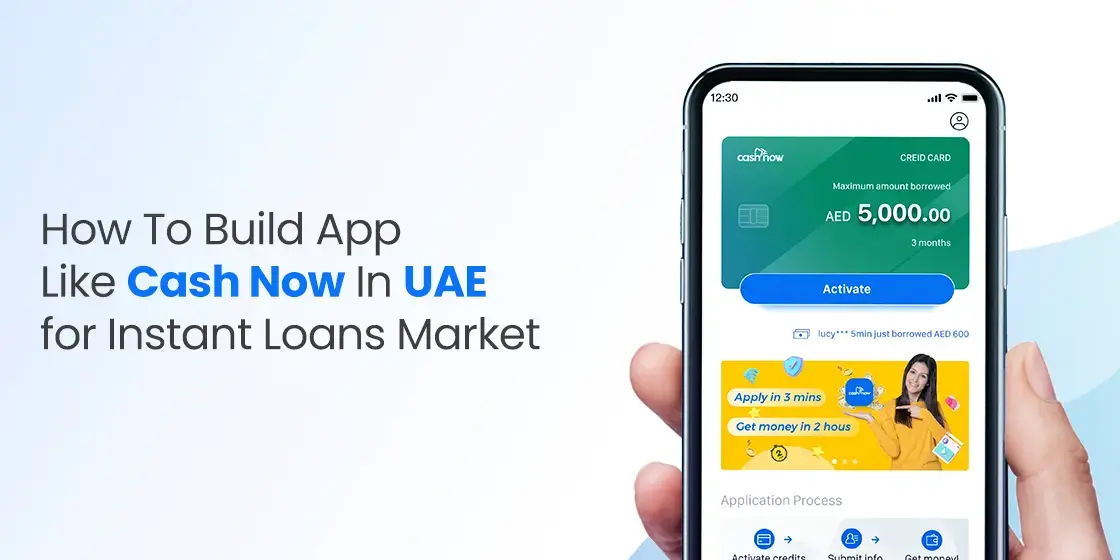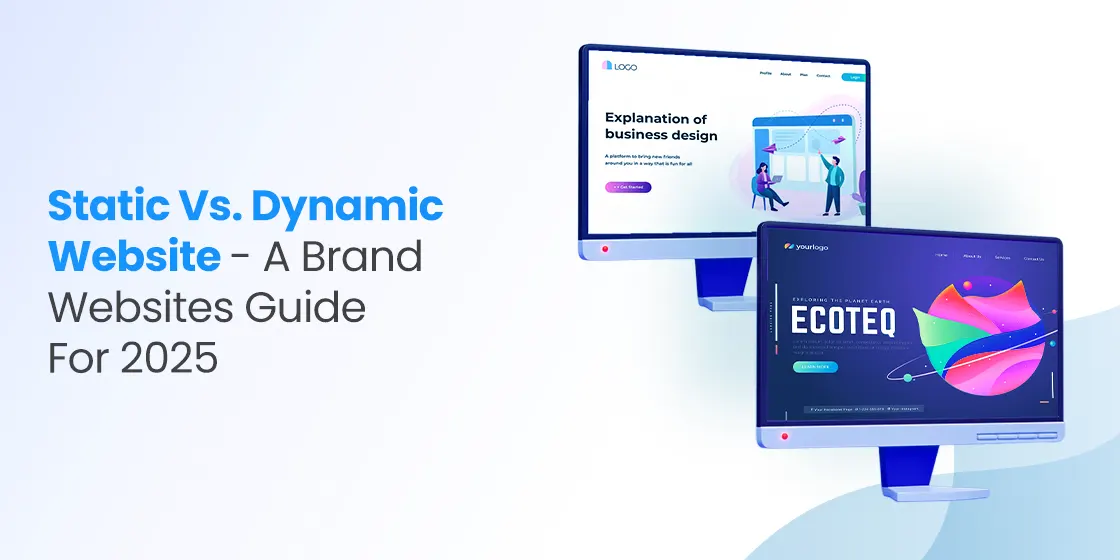Table of Content
Discover Whether PWA vs Native App Development Is The Better Choice
In a world of rapidly advanced mobile technology like today, businesses and developers face a crucial decision when aiming to reach their target audience through mobile applications: should they invest in Progressive Web Apps (PWAs) or native mobile applications? This choice, which may seem a simple one, represents a fundamental trade-off, often characterized as a “battle” between the broad accessibility and reach offered by PWAs and the deep, device-specific functionality and performance typically associated with native apps.
Understanding the core characteristics, development processes, and strategic advantages of PWA vs Native app development approach is critical for making informed decisions that align with specific project goals, target user behavior, and resource constraints. The selection between a PWA and a native app is not a one-size-fits-all scenario, but rather a nuanced consideration of various factors that ultimately determine the success and user experience of the mobile application.
In this article, we will dive into a detailed comparative analysis of PWAs and native apps. We will explore their distinct characteristics, advantages, disadvantages, and the specific scenarios where each approach shines for professional web development services. Let’s begin.
What Are Progressive Web Apps (PWA)?

Progressive Web Apps (PWAs) represent a paradigm shift in web development, aiming to bridge the gap between traditional websites and native mobile applications. They are essentially web applications built using standard web technologies – HTML, CSS, and JavaScript – but enhanced with features that provide users with an “app-like” experience directly within their web browser. The core principle behind PWAs is to deliver a user experience that is fast, reliable, engaging, and accessible to anyone, on any device, with a single codebase. This is achieved through the strategic implementation of several key technologies and design principles.
One of the defining characteristics of PWAs is their progressive enhancement approach. This means that the core functionality of the application is accessible to all users with a basic web browser, while users with more modern browsers and devices benefit from enhanced features and capabilities. This ensures broad compatibility and accessibility across a wide range of devices and network conditions.
Native Apps Explained

Native mobile applications, on the other hand, are software programs developed specifically for a particular mobile operating system, such as iOS (for Apple devices) or Android (for a wide range of other smartphones and tablets).
These applications are built using the platform-specific Software Development Kits (SDKs) and programming languages provided by the respective operating system vendors (e.g., Swift or Objective-C for iOS, and Java or Kotlin for Android). Native apps are installed directly onto the user’s device from official app stores like the Apple App Store or Google Play Store, and they reside on the device’s storage. Moreover, there are a number of great, highly tested mobile app development tools available for native app development.
PWA Vs Native App Development – A Comparative Analysis of the Two Types

When talking about PWA vs Native app development, there is a significant difference in the cost and effort involved. Developing a Progressive Web App differs significantly from building a native mobile application, impacting various aspects of the development lifecycle, including technology stack, tools, deployment, and maintenance. Understanding these differences is crucial for making an informed decision based on project requirements and available resources.
Technology Stack and Development Process
PWAs are built using standard web technologies – HTML, CSS, and JavaScript – which are familiar to a large pool of web developers. This allows for potentially faster development cycles and the possibility of leveraging existing web development expertise. This allows businesses to turn their websites into innovative web app ideas for better brand reach.
Native apps, on the other hand, require platform-specific programming languages (Swift/Objective-C for iOS, Java/Kotlin for Android) and the use of platform-specific SDKs and integrated development environments (IDEs) like Xcode (for iOS) and Android Studio (for Android). This often necessitates specialized development teams with expertise in the target platform.
Deployment and Distribution
PWAs are deployed to web servers and are accessible through web browsers via URLs. Users can “install” them to their home screen directly from the browser, bypassing the traditional app store submission and approval process. This offers a significant advantage in terms of speed of deployment and ease of distribution. Native apps, conversely, must be submitted to and approved by the respective app stores (Apple App Store and Google Play Store) before they can be downloaded and installed by users.
This process can involve adherence to strict guidelines and potential delays in approval. Updates to PWAs are typically seamless and instantaneous, deployed directly to the web server, while native app updates require users to download and install new versions from the app stores.
Maintenance and Updates
Maintaining a PWA can be simpler as it typically involves managing a single codebase for all platforms. Updates are rolled out centrally and are immediately available to all users. Native apps require maintaining separate codebases for iOS and Android, which can increase the complexity and cost of maintenance and updates. Each platform requires its own update process through the respective app stores, which can be time-consuming and may not be adopted by all users immediately.
Furthermore, addressing bugs or security vulnerabilities often requires releasing separate updates for each native app. The unified nature of PWA development and deployment can lead to more efficient maintenance and a more consistent user experience across different devices.
When Should You Opt for Progressive Web Apps?

Progressive Web Apps offer a compelling solution in various scenarios where accessibility, reach, and a streamlined development process are paramount. In fact, when you look up “how to create a web application,” progressive web app tutorials are some of the highest rated ones available. Choosing a PWA can be a strategic advantage when the following factors are of significance.
Prioritizing Broad Reach and Accessibility
If your primary goal is to reach the widest possible audience across different devices and operating systems with a single codebase, PWAs are an excellent choice. Users can access the application directly through their web browser without the friction of app store downloads and installations. This can be particularly beneficial for businesses targeting diverse user demographics or those with limited device storage.
Faster Time-to-Market and Lower Development Costs
Developing a PWA typically involves a shorter development cycle and potentially lower costs compared to building and maintaining separate native apps for iOS and Android. Utilizing familiar web technologies and a single codebase can streamline the development process and reduce the need for specialized platform-specific development teams. This makes PWAs an attractive option for startups, small businesses, or projects with limited budgets and tight deadlines.
Seamless User Experience and Engagement
PWAs can provide a highly engaging and app-like user experience through features like offline access, push notifications, and home screen installation. This can improve user satisfaction, increase engagement, and drive conversions without requiring users to navigate app stores. For content-heavy applications, e-commerce sites, or platforms focused on user interaction, PWAs can offer a compelling alternative to traditional websites and even some native apps.
Enhanced Discoverability and Shareability
PWAs are essentially websites, making them easily discoverable through search engines and shareable via URLs. This can significantly improve organic user acquisition and simplify the process of sharing the application with others. Unlike native apps, PWAs do not require users to search for and install them from an app store, reducing the barriers to entry and facilitating viral growth.
When Should Native Apps Be Your Go-To Choice?

While PWAs offer numerous advantages, native apps remain the preferred choice in situations where deep device integration, optimal performance, and access to advanced platform-specific features are critical. Opting for a native app development approach is often the right decision when the following factors are important.
Demanding High Performance and Complex Functionality
If your application requires intensive processing power, complex graphics, or access to advanced device hardware features (such as augmented reality, advanced camera functionalities, or sophisticated sensors), native apps typically offer superior performance and more comprehensive access to these capabilities.
For applications like high-end games, professional photo or video editing tools, or those relying heavily on real-time data processing, native development often provides the necessary level of optimization and control.
Requiring Full Access to Device-Specific APIs and Features
Native apps have unrestricted access to the full suite of device-specific APIs and features provided by the operating system. This allows for deep integration with the device’s ecosystem, including features like background location services, Bluetooth communication with specific hardware, advanced biometric authentication, and seamless interaction with other native applications.
If your application’s core functionality and idea relies heavily on these platform-specific capabilities, and not on how long does it take to develop an app, a native approach is generally necessary.
Targeting a Specific Platform with a Tailored User Experience
If your target audience primarily uses a single mobile operating system (iOS or Android), and you want to deliver a user experience that is perfectly tailored to the conventions and design paradigms of that specific platform, native apps provide the most control over the user interface and interaction patterns.
This can lead to a more polished and intuitive experience for users who are accustomed to the native look and feel of their devices.
Monetization Through App Stores and In-App Purchases
While PWAs can implement various monetization strategies, native apps have a more established ecosystem for generating revenue through app store purchases, in-app purchases, and subscription models. If your primary monetization strategy relies heavily on these app store-centric mechanisms, developing a native app may provide a more direct and familiar pathway to revenue generation.
Conclusion
The choice between PWA vs native app development represents a strategic decision with significant implications for accessibility, functionality, development costs, and user experience. PWAs offer a compelling path towards broad reach, faster development, and a seamless web-to-app transition, making them ideal for businesses prioritizing accessibility and a consistent experience across platforms.
Conversely, native apps provide unparalleled access to device-specific features and optimal performance, remaining the go-to choice for applications demanding complex functionality and a deeply integrated platform-specific user experience. Ultimately, the choice between accessibility and functionality boils down to carefully evaluating the specific needs and goals of your project, understanding the trade-offs involved, and selecting the development path that best positions you for success.

Empower your digital journey with StruqtIO - Your dedicated partner for cutting-edge custom software development, innovation, and digital transformative solutions. Harness the power of technology to elevate your business and redefine your digital landscape today.


